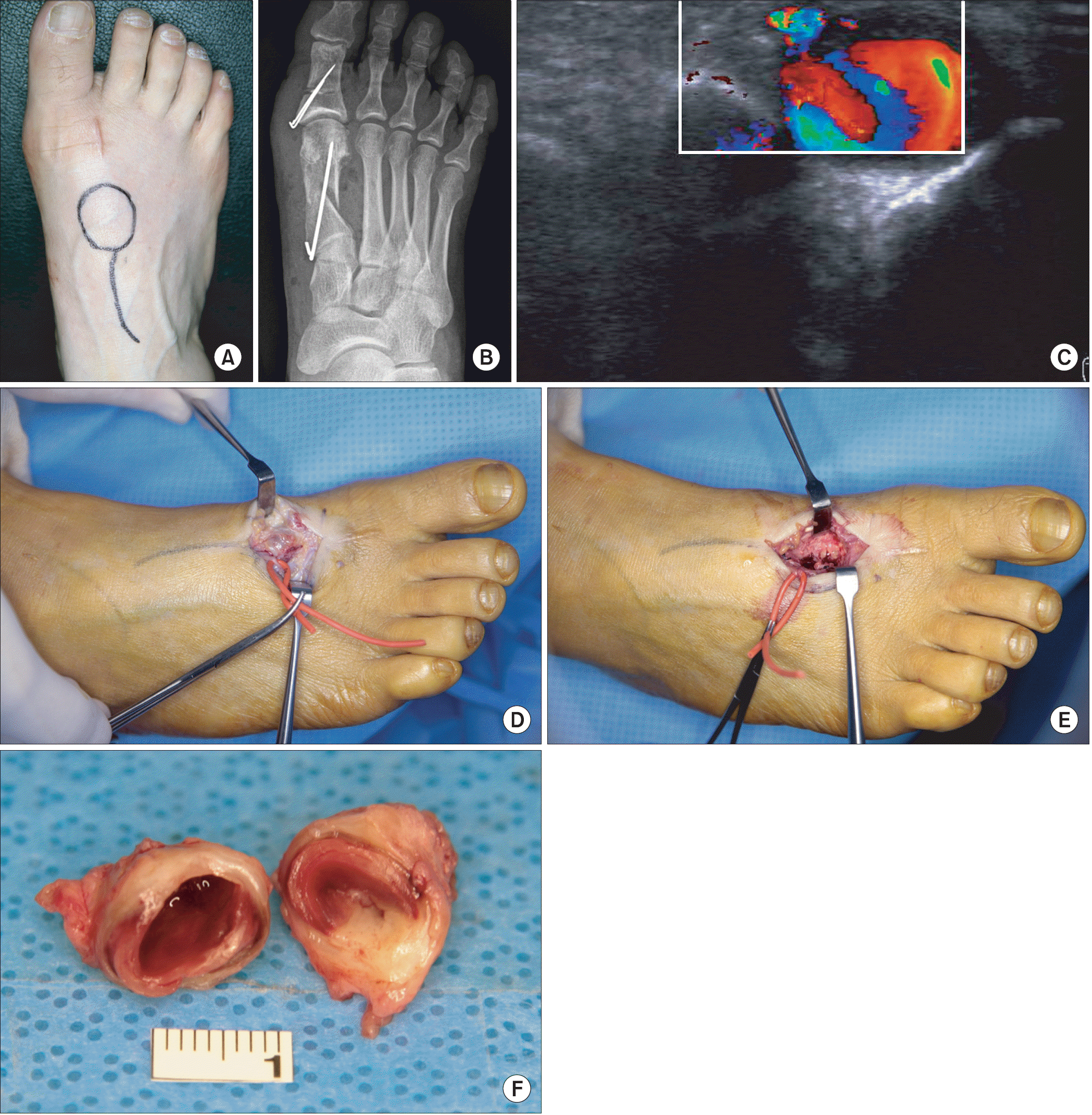Abstract
Occurrence of pseudoaneurysm in the foot and ankle is rare, and is usually caused by traumatic injury or by iatrogenic intervention. Iatrogenic pseudoaneurysms in the foot and ankle have been observed after rearfoot and ankle fusions, ankle arthroscopy, endoscopic and open plantar fasciotomy, tibial osteotomy with limb lengthening, midfoot amputation, and Lapidus procedure. We report on a patient who developed a pseudoaneurysm of the dorsal metatarsal artery following correction of hallux valgus. The patient underwent proximal chevron osteotomy and Akin phalangeal osteotomy. The feeding artery was ligated and the pseudoaneurysm was excised.
References
1. Bogokowsky H, Slutzki S, Negri M, Halpern Z. Pseudoaneurysm of the dorsalis pedis artery. Injury. 1985; 16:424–5.

2. Economou P, Paton R, Galasko CS. Traumatic pseudoaneurysm of the lateral plantar artery in a child. J Pediatr Surg. 1993; 28:626.

3. Higgs SL. Arteriovenous aneurysm of the posterior tibial vessels following operation for stabilizing the foot. Proc R Soc Med. 1931; 24:1378–9.

4. Nierenberg G, Hoffman A, Engel A, Stein H. Pseudoaneurysm with an arteriovenous fistula of the tibial vessels after plantar fasciotomy: a case report. Foot Ankle Int. 1997; 18:524–5.

5. Bandy WD, Strong L, Roberts T, Dyer R. False aneurysm–a complication following an inversion ankle sprain: a case report. J Orthop Sports Phys Ther. 1996; 23:272–9.

6. Thornton BP, Minion DJ, Quick R, Vasconez HC, Endean ED. Pseudoaneurysm of the lateral plantar artery after foot laceration. J Vasc Surg. 2003; 37:672–5.

7. Yamaguchi S, Mii S, Yonemitsu Y, Orita H, Sakata H. A traumatic pseudoaneurysm of the dorsalis pedis artery: report of a case. Surg Today. 2002; 32:756–7.

8. Wollstein R, Wolf Y, Sklair-Levy M, Matan Y, London E, Nyska M. Obliteration of a late traumatic posterior tibial artery pseudoaneurysm by duplex compression. J Trauma. 2000; 48:1156–8.

Figure 1.
(A) A 55-year-old woman presented for evaluation of a mass on the dorsum of the left foot. (B) She had a proximal chevron osteotomy and Akin osteotomy with Kirschner wires fixation. (C) Ultrasound of the soft tissue mass was performed, demonstrating an ovoid heterogeneous well-defined vascular mass measuring 1.3 cm longitudinally by 1.6 cm transversely by 1.2 cm in depth. Echogenic mural thrombus surrounded a central, well-defined, 8-mm diameter anechoic region within the mass that contained swirling vascular signal on color Doppler ultrasound. (D, E) The artery was then ligated and the pseudoaneurysm was excised (D, before excision; E, after excision). (F) Gross photograph of cross section of a mass.





 PDF
PDF ePub
ePub Citation
Citation Print
Print


 XML Download
XML Download